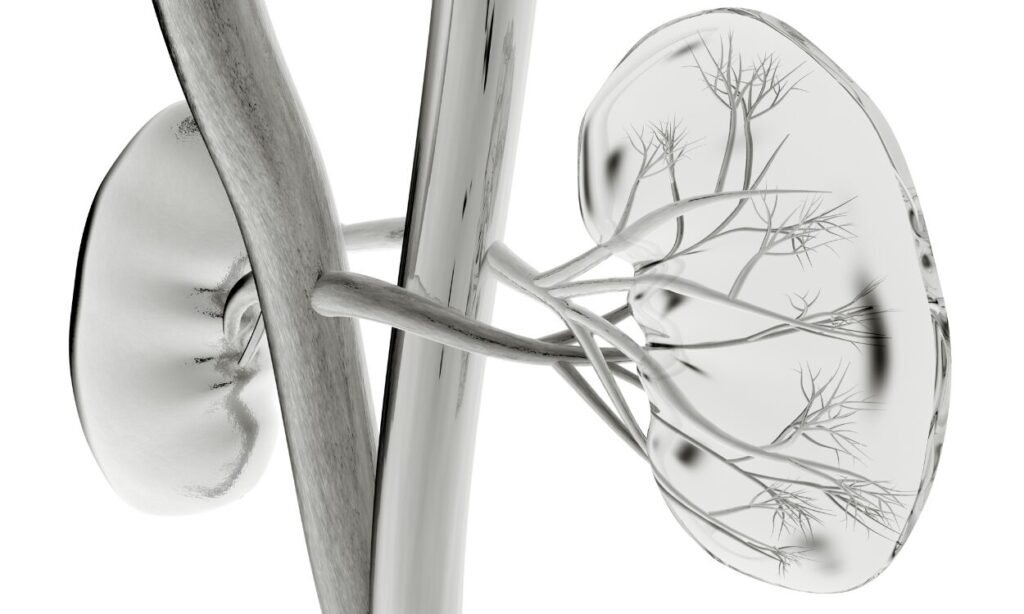Urinary tract infections, or UTIs, are a common woe, especially for women. These infections occur when bacteria infiltrate the urinary system, causing irritation, inflammation, and a whole lot of discomfort. While not life-threatening in most cases, UTIs can be a real drag. UTIs care is essential for managing and preventing these pesky infections.
This blog will be your one-stop shop for understanding UTIs. We’ll delve into the causes, symptoms, diagnosis, treatment options, and prevention strategies. Let’s get down to business and flush away those UTIs!
Understanding Your Urinary Tract: UTIs Care
Before we dive into infections, let’s understand the plumbing system responsible for eliminating waste: the urinary tract. This intricate network consists of four organs:

Kidneys:
These bean-shaped powerhouses filter waste and excess fluids from your blood, producing urine.
Ureters:
These thin tubes act as highways, transporting urine from the kidneys to the bladder.
Bladder:
This muscular sac stores urine until you’re ready to pee.
Urethra:
This narrow tube is the final frontier, carrying urine out of the body.
Normally, urine flows in a one-way street, from the kidneys down to the urethra. However, unwelcome bacteria can sometimes disrupt this flow, causing an infection.
UTIs Care: Understanding Culprits and Causes Behind Urinary Tract Infections
The most common culprit behind UTIs is the infamous E. coli bacteria, typically found in the intestines. When E. coli ventures near the urethra (the urinary tract’s exit point), it can hitch a ride into the urinary system. Other bacteria can also cause UTIs, but E. coli takes the champion’s seat.
Here are some factors that can increase your risk of a UTI, including UTIs care.:
Anatomy:
Women have a shorter urethra compared to men, making it a shorter distance for bacteria to travel.
Certain Birth Control Methods:
Diaphragms and spermicides with spermicide can disrupt the natural balance of bacteria in the vagina, increasing UTI risk.
Menopause:
Declining estrogen levels after menopause can thin vaginal tissues, making them more susceptible to infection.
Urinary Tract Problems:
Blockages or structural abnormalities in the urinary system can increase UTI risk.
Catheter Use:
Using catheters to empty the bladder can introduce bacteria.
Wiping Habits:
Wiping back to front after using the toilet can spread bacteria from the anus to the urethra. So Wipe front to back one way only.
Sometimes when traveling to different parts of the world you may encounter unhygienic or not so clean toilets and you can get infected with UTI. So watch out and wipe the toilet seat with a tissue or cleaning sanitizing wipe when traveling.
UTI SOS: Signs and Symptoms
UTI care can manifest in various ways, but some common symptoms include:
Frequent Urination:
You might feel the urge to pee constantly, even if you haven’t drunk much fluid.
Painful Urination:
Burning or stinging during urination is a telltale sign of a UTI.
Urgent Urination:
You might have a sudden, strong urge to pee, even if you haven’t had much to drink.
Small Amounts of Urine:
You might only be able to urinate small amounts at a time, despite feeling the urge to go.
Cloudy or Bloody Urine:
Urine might appear cloudy or bloody due to the presence of white blood cells or blood.
Pelvic Pain:
You might experience pain or pressure in your lower abdomen or pelvis.
If you experience any of these symptoms, it’s crucial to consult a doctor for a proper diagnosis and treatment plan. Early diagnosis and treatment can prevent the infection from spreading to the kidneys, which can lead to more serious complications.
Unveiling the Mystery: Diagnosis of UTIs
Diagnosing urinary tract infections (UTIs) usually requires a blend of approaches, focusing on UTIs care.
Urinalysis:
This test analyzes a urine sample for the presence of white blood cells, red blood cells, bacteria, or other abnormalities.
Urine Culture:
In some cases, a urine culture might be necessary to identify the specific bacteria causing the infection and determine the most effective antibiotic treatment.
Imaging Tests:

X-rays, ultrasounds, or CT scans might be used in rare cases to rule out underlying urinary tract problems.
Battling the Bugs: Treatment Options for UTIs – UTIs Care
The good news is that UTIs are highly treatable. The most common treatment for UTIs is antibiotics. Your doctor will prescribe an antibiotic that targets the specific bacteria causing your infection. It’s crucial to complete the entire course of antibiotics, even if you start feeling better, to ensure the infection is completely eradicated.
Here are some additional treatment options:
Pain Relief Medications:
Over-the-counter pain relievers like ibuprofen or acetaminophen can help alleviate discomfort during urination.
Urinary Tract Relaxants:
In some cases, medications that relax the bladder muscles might be prescribed to reduce bladder spasms and discomfort.
Conclusion:
Keeping Your Urinary Tract Happy and Healthy
UTIs are a common annoyance, but with proper knowledge and action, you can take control. By understanding the causes and symptoms, practicing preventive measures, and seeking prompt medical attention when needed, you can keep your urinary tract healthy and infection-free. Remember, early diagnosis and treatment are key to avoiding complications.
Now that you’re armed with this information, take charge of your urinary health!
FAQ
How can UTIs care be managed at home with remedies?
While there’s no magic bullet for curing UTIs, certain strategies can help alleviate symptoms and potentially prevent future infections:
Drink Plenty of Fluids:
Water dilutes urine and helps flush out bacteria. Aim for 8-10 glasses of water daily.
Urinate When You Feel the Urge:
Holding in urine allows bacteria to multiply.
Wipe Front to Back:
This prevents bacteria from spreading from the anus to the urethra.
Cranberry Juice:
While research is ongoing, some studies suggest cranberry juice might help prevent UTIs. However, it’s not a substitute for antibiotics if you have an active infection.
Can I prevent UTIs from recurring?
Absolutely! Here are some preventive measures:
Practice good hygiene:
Keep the genital area clean and dry.
Wear loose-fitting cotton underwear:
Tight-fitting clothes can trap moisture and promote bacterial growth.
Consider cranberry supplements:
Some studies suggest cranberry supplements might help prevent UTIs in some individuals. Talk to your doctor before starting any supplements.
When should I seek UTIs care from a doctor?
Don’t hesitate to seek medical attention if you experience any UTI symptoms. Early diagnosis and treatment are crucial to prevent complications. If you experience frequent UTIs, consult your doctor to discuss underlying causes and long-term management strategies.
Can UTIs affect pregnancy?
UTIs are more common during pregnancy due to hormonal changes. Left untreated, UTIs can increase the risk of preterm labor and low birth weight. If you’re pregnant and experience UTI symptoms, consult your doctor right away.
By understanding UTIs and taking preventive measures, you can keep your urinary tract healthy and avoid the discomfort these infections bring. Remember, knowledge is power, and when it comes to your urinary health, this knowledge can empower you to take charge!

